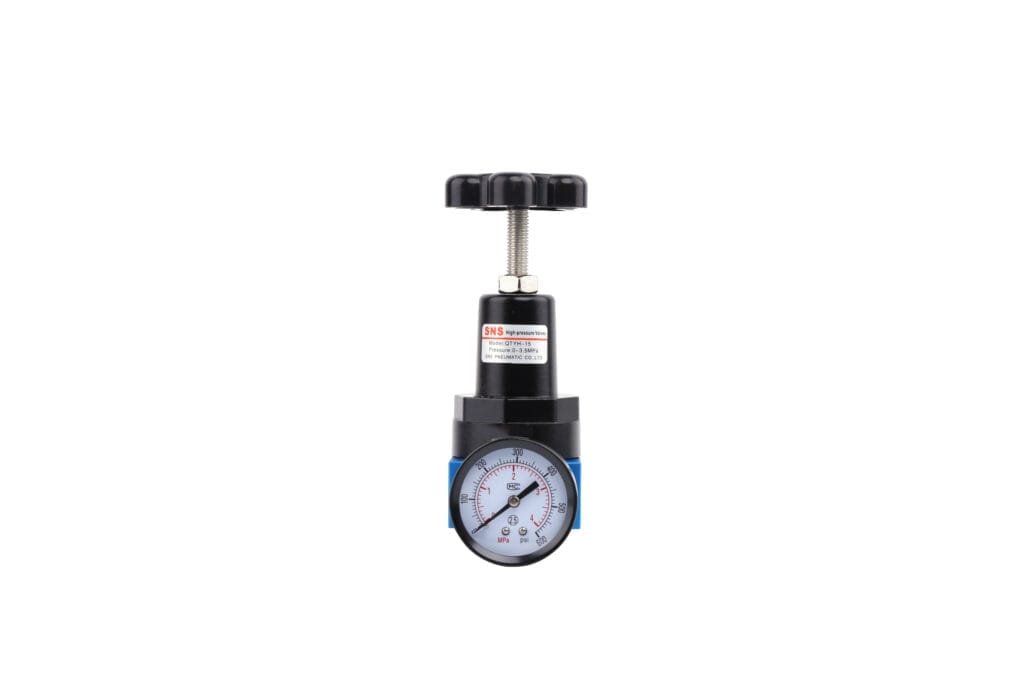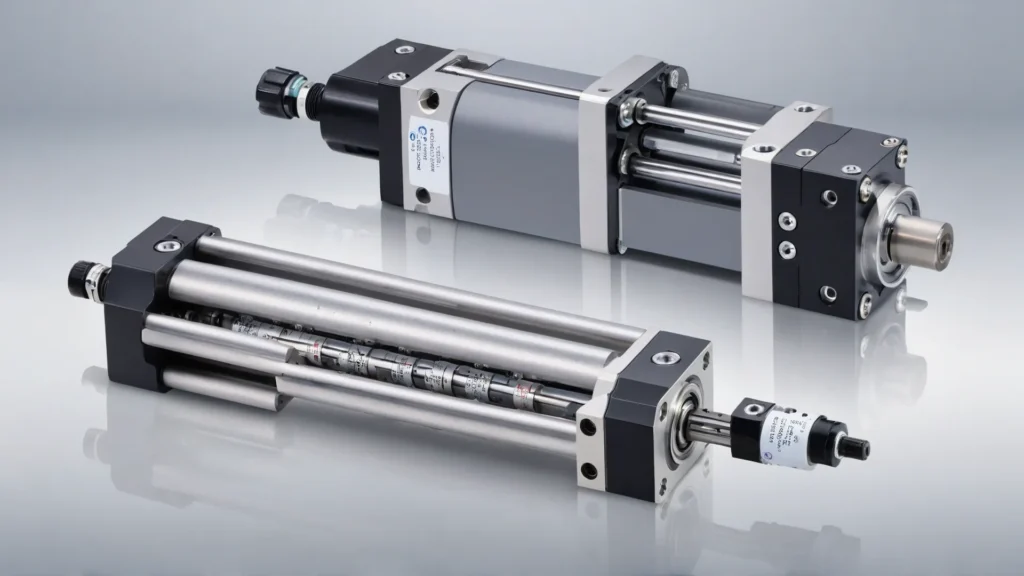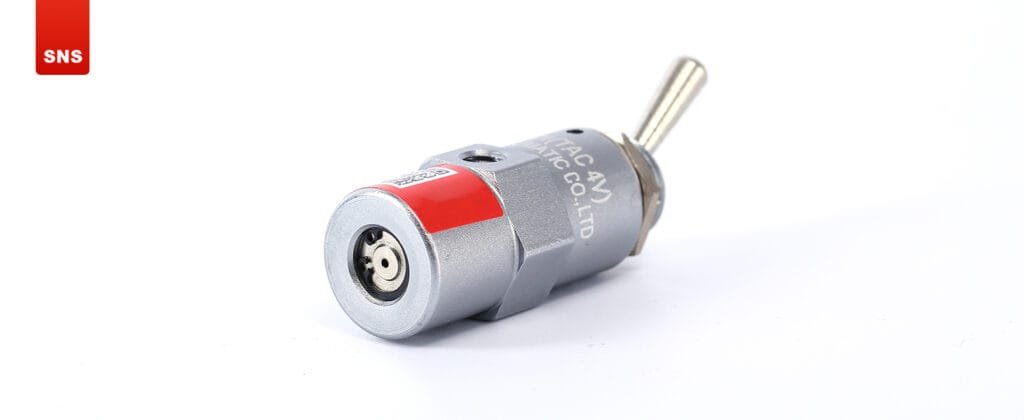What Happens if Gas Pressure Is Too High
Imagine your home’s heating system suddenly shuts down on a freezing winter day. The culprit? Excessively high gas pressure that’s tripped the system’s safety mechanisms. High gas pressure can lead to a range of problems, from minor inconveniences to catastrophic failures.
You’ll want to understand the causes, how you can detect it early, and the immediate steps to take should you find yourself in such a predicament. As we investigate these aspects, you’ll ascertain not only how to prevent potential dangers but also guarantee the longevity and efficiency of your gas appliances.
What Happens To A Gas At Very High Pressure?
When you expose gas to very high pressure, you’re not just altering its physical state; you’re also inviting a host of challenges.
These include safety hazards, potential for equipment damage, operational inefficiencies, and even environmental impact.
Safety Hazards
Handling gases under high pressure can be extremely dangerous. Such conditions significantly increase the risk of explosions or the release of harmful substances. In scenarios where gases are compressed to high pressures, their potential energy escalates, making them more volatile and prone to reacting explosively. This heightened state of reactivity can lead to severe accidents if the gas encounters any source of ignition.
Moreover, the act of compressing gases to such extents may compromise the structural integrity of their storage containers. Over time, or under certain conditions, this can result in the development of leaks. Should the escaping gas be toxic, it poses a direct threat of poisoning or causing suffocation to individuals in the vicinity. This is particularly concerning in environments where air circulation is limited.
In enclosed or poorly ventilated spaces, the danger is twofold. Not only is there a risk of poisoning from toxic gases, but there’s also the hazard of asphyxiation. This occurs when the high-pressure gas displaces the oxygen in the air, making it difficult or impossible for individuals to breathe.

Equipment Damage
High-pressure gases possess the capacity to exert significant strain on various types of equipment. This strain can lead to potential damage or even complete failure of the system. Understanding the maximum pressure rating of each component within gas systems is crucial. Surpassing these limits can result in several problems.
When the pressure exceeds the designed limits, seals may break. This can cause the equipment to leak. Additionally, joints might also start leaking. In extreme cases, surpassing pressure limits can lead to catastrophic failures, such as explosions.
Beyond immediate damage, high pressure can also cause accelerated wear and tear. This is particularly true for moving parts within the system, like valves and compressors. Their lifespan can be significantly reduced under constant high-pressure conditions.
The stress from continual high pressure doesn’t just cause immediate issues. Over time, it can lead to cracks and material fatigue within the equipment. This type of degradation isn’t always visible. It acts as a silent threat, potentially leading to sudden and serious problems.
Operational Inefficiencies
Operating at excessively high pressures compromises gas system performance significantly. This condition forces equipment to exert more effort, consequently, energy consumption escalates.
This rise in energy use elevates operational expenses. Furthermore, the constant high-pressure operation strains the machinery, potentially reducing equipment longevity.
Moreover, the effectiveness in gas transfer or chemical reactions diminishes. This inefficiency stems from operating beyond optimal conditions. Essentially, the system is pushed beyond its intended operational parameters.
This overextension incurs long-term costs. In summary, high-pressure operation impacts both efficiency and equipment health adversely.
Environmental Impact
High-pressure gas processes can significantly harm the environment. These processes often lead to the release of methane and other harmful gases. Methane is especially notable for its strong greenhouse effect.
These emissions play a major role in air pollution. They also contribute to the global issue of warming and climate change. The impact of these processes extends beyond air quality.
High-pressure conditions can damage containment systems. This leads to leaks and spills. Such incidents directly affect the surrounding environment. They pose risks to both wildlife and human health.

Causes Of High Gas Pressure
You’ll find that high gas pressure often stems from a few key issues. Equipment malfunction, external factors, and human error are the primary culprits behind this phenomenon.
Equipment Malfunction
Equipment Malfunction
High gas pressure often arises from equipment malfunction. This issue can originate from multiple sources. Faulty valves are a common culprit. Clogged pipelines also contribute significantly. These problems can degrade your system’s efficiency.
Without vigilant observation, minor issues can escalate. This can lead to hazardous conditions. In severe cases, it may result in system failure. Therefore, regular maintenance is crucial.
Broken Pressure Gauges
Faulty pressure gauges pose a significant hazard. This is because they’re integral to monitoring pressure levels within systems. When these devices fail to function correctly, the consequences can be severe.
Without accurate pressure readings, operators are unaware of the real-time conditions. This ignorance isn’t bliss. It’s a direct path to potential disaster.
High gas pressure goes unnoticed without functioning gauges. This oversight can escalate into serious safety concerns. Over-pressurization becomes a looming threat.
External Factors
Temperature Fluctuations
Temperature fluctuations significantly affect gas pressure. These changes can cause pressure inside a container to rise or fall. Understanding and managing these variations is crucial for safety and system integrity.
When the environment warms up, gas molecules expand. This expansion leads to an increase in pressure within the container. It’s essential to monitor this change to prevent potential overpressure situations.
On the other hand, cooler temperatures cause gas to contract. This contraction can result in a notable decrease in pressure. Such drops might compromise the effectiveness of the gas system, necessitating adjustments to maintain operational standards.
Overfilling Of Gas Containers
Overfilling gas containers poses serious risks. This common error can lead to dangerously high gas pressure and subsequent hazards.
When a container is filled beyond its intended capacity, the gas has less space to expand. This restriction can cause a rapid increase in pressure within the container.
Human Error
Incorrect Settings Or Adjustments
Incorrect adjustments often lead to excessive gas pressure. This is a frequent mistake in system management. Minor changes can upset the system’s equilibrium, resulting in dangerously high pressure levels.
Adhering to guidelines is crucial. Each adjustment should be thoroughly verified. Neglecting this can harm the system and pose significant safety hazards.
It’s vital to ensure settings align with manufacturer’s specifications to prevent issues. Confirming settings reduces the risk of damage and safety risks.
Lack Of Regular Maintenance And Inspections
Neglecting routine maintenance and inspections is a key factor in high gas pressure issues. This lack of attention can turn small problems into major hazards.
Scheduled checks are critical. They ensure the system operates correctly. These checks also verify that all components function properly.
Without regular maintenance, minor issues may worsen. This can lead to dangerously high pressure levels. Ensuring system settings are accurate is part of this maintenance. It helps prevent unexpected breakdowns.

How Can High Gas Pressure Be Detected Early?
Detecting high gas pressure early is critical for safety and system maintenance. Multiple strategies can be employed to identify excessive pressure before it becomes hazardous.
Firstly, incorporating pressure gauges is fundamental. These instruments offer immediate feedback on the system’s pressure state. Observing the gauge’s needle entering or surpassing the red zone signals excessive pressure. This real-time monitoring is invaluable for maintaining safe pressure levels.
Next, consider pressure relief valves. These are designed to open automatically when pressure exceeds a predetermined safe limit. Their activation not only signals high pressure but also acts as a safeguard. This mechanism helps in averting further pressure buildup and potential system damage.
Gas detectors are another essential tool. These devices detect high pressure among other abnormal conditions, triggering alarms. The alarms, whether visual or auditory, serve as prompt alerts. Early detection through these alerts facilitates timely corrective actions, thus preventing escalation.
Regular system inspections are crucial. Professional evaluations can uncover hidden issues, including undue pressure buildup. Such inspections, conducted periodically, are key in identifying and rectifying potential problems early.
What Are The Immediate Steps To Take If High Gas Pressure Is Detected?
Upon noticing high gas pressure, immediately turn off the gas supply. This crucial step prevents potential dangers like leaks or explosions. Find the main gas valve. Turn it to ‘off.’ Knowing its location and how to operate it’s vital for emergencies.
Open windows and doors to ventilate the area. This action helps disperse any gas buildup, reducing inhalation risks and the likelihood of ignition. However, avoid using anything that might create a spark, such as electrical switches or mobile phones, near the suspected leak area.
Contact your gas utility company without delay. Inform them about the high gas pressure. They’ll instruct you on what to do next and send a technician to check the gas pressure, find the cause, and fix it. Don’t try to solve the problem yourself due to the danger and potential to make things worse.
While waiting for professional help, stay away from the affected area to keep safe. If anyone shows symptoms of gas poisoning, like dizziness, nausea, or headaches, get medical help immediately.
Faqs
What Happens If Pressure Of Gas Increases?
Increasing gas pressure affects its volume, temperature, and the container. In a fixed volume, like a cylinder, pressure increases lead to higher temperatures. This happens because gas molecules move faster and hit the container walls harder. If the volume can expand, the gas might do so. But this can stress the container.
Too much pressure can cause mechanical failure or leaks. This is dangerous. Monitoring and regulating gas pressure is crucial. Proper maintenance and following safety guidelines are necessary. They help keep the system safe. This protects the equipment and its surroundings.
Each aspect of gas behavior under increased pressure has implications. For instance, the rise in temperature due to increased pressure can affect chemical reactions within the gas. Faster-moving molecules can cause more frequent collisions. This can lead to a higher rate of chemical reactions if reactive gases are present.
The potential expansion of gas, when allowed, must be managed carefully. The design of containers and systems must account for possible changes in volume. This involves engineering considerations to ensure durability and flexibility where needed.
The stresses on the container from expanding gas or increased internal collisions can lead to material fatigue. Over time, this may weaken the container, making it prone to sudden failure. Regular inspections and maintenance are essential to identify any signs of wear and tear early on.
Safety measures, such as pressure relief valves, are vital. These mechanisms ensure that if pressure exceeds safe levels, it can be released in a controlled manner. This prevents catastrophic failure and minimizes the risk of accidents.
Education and training for those handling pressurized gases are also key. Understanding how to operate and maintain pressure systems safely can prevent misuse and recognize warning signs of overpressure.
What Happens If You Over Pressurize A Gas Regulator?
Over-pressurizing a gas regulator can severely damage it. This damage compromises the regulator’s functionality. It may become less effective or completely unusable.
When a regulator is damaged, safety hazards emerge. Gas leaks are a primary concern. These leaks pose significant risks. They can lead to fires or explosions if they meet an ignition source.
The equipment downstream is also at risk. Excessive pressure can cause these devices to malfunction. In some cases, it can lead to permanent damage.

What Happens To A Gas Under Extreme Pressure?
Applying high pressure to a gas significantly changes its characteristics and how it must be managed. High pressure reduces a gas’s volume, which can inadvertently increase its temperature. This effect, known as adiabatic heating, may cause the gas to act unpredictably.
Under such conditions, gases may transform into liquids or solids. This process is referred to as liquefaction or solidification. These state changes impact storage, transportation, and use of the gas.
There’s also the danger of container failure. High-pressure gases can forcefully break through their containers. This poses risks of injury or damage.
Managing high-pressure gases requires stringent safety protocols. Accidents must be prevented through careful control measures.
Conclusion
In summary, if you’re faced with high gas pressure, it’s important to act swiftly. High pressure can lead to gas leaks, explosions, and damage to appliances.
Recognizing early signs and understanding the causes can be lifesaving. If you detect high pressure, immediately shut off the gas supply, ventilate the area, and call professionals.
Remember, safety comes first; never try to fix gas pressure issues yourself. Stay informed, stay prepared, and always prioritize the well-being of everyone involved.




